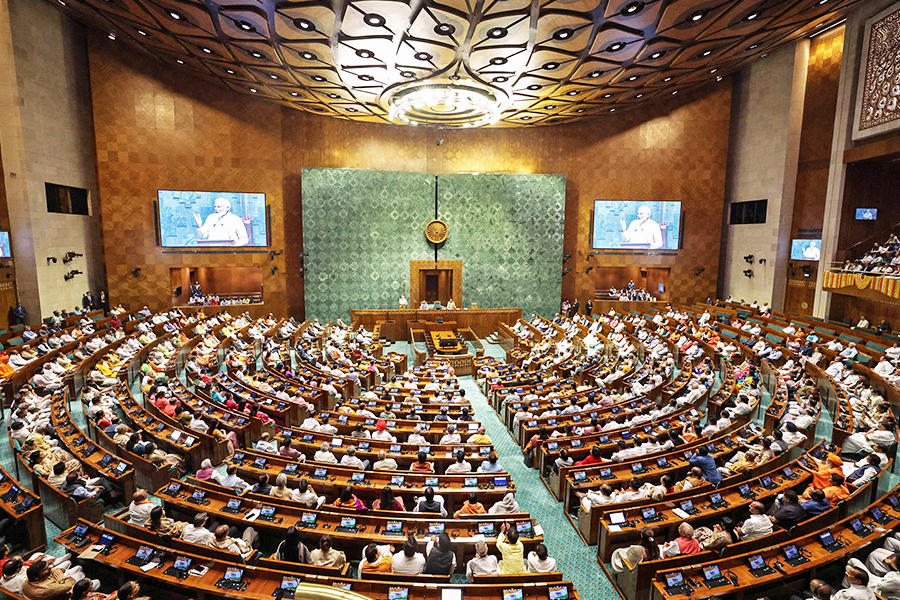India’s Criminal Law Reforms: Moving from Colonial Framework to Modern Justice : Bharatiya Nyaya Sanhita Bill, Bharatiya Nagarik Suraksha Sanhita Bill & Bharatiya Sakshya Bill, 2023
Table of Contents
- Introduction
- Overview of India’s historic criminal law reforms
- Importance of replacing colonial-era laws
- Old Laws: A Colonial Legacy
- Indian Penal Code (IPC), 1860
- Framework and historical context
- Outdated punishments and provisions
- Code of Criminal Procedure (CrPC), 1973
- Procedural details and criticisms
- Contributing factors to case backlog
- Indian Evidence Act, 1872
- Rules for evidence and their relevance today
- Challenges in modern justice delivery
- Indian Penal Code (IPC), 1860
- New Laws: Modernization and Reform
- Bharatiya Nyaya Sanhita Bill, 2023 (Replaces IPC)
- Focus on decolonization and modern principles
- Key changes and innovations
- Bharatiya Nagarik Suraksha Sanhita Bill, 2023 (Replaces CrPC)
- Efficiency improvements and digital integration
- Enhancing transparency and accessibility
- Bharatiya Sakshya Bill, 2023 (Replaces Indian Evidence Act)
- Adaptation to include modern forms of evidence
- Simplification of evidence collection and presentation
- Bharatiya Nyaya Sanhita Bill, 2023 (Replaces IPC)
- Key Impacts and Expectations
- Victim-Centric Approach
- Rights and rehabilitation under the new laws
- Speed and Efficiency
- Expected improvements in justice delivery
- Reduction of case backlog
- Decriminalization and Alternative Punishments
- Shift towards rehabilitative justice
- Examples of decriminalized offenses and community service
- Victim-Centric Approach
- Conclusion
- Significance of India’s new criminal laws
- Potential for transformative impact on justice system
- Future prospects and challenges in implementation
1. Introduction
Effective from 1st July 2024, India has introduced comprehensive reforms to its criminal justice system, replacing the Indian Penal Code (IPC) of 1860, the Code of Criminal Procedure (CrPC) of 1973, and the Indian Evidence Act of 1872. These changes mark the most substantial legal overhaul in the nation’s history, aiming to modernize and streamline the administration of justice.

2. Old Laws: A Colonial Legacy
- Indian Penal Code (IPC), 1860:
- Framework: Created during British colonial rule, the IPC addressed a wide range of offenses but often lacked relevance to contemporary issues.
- Punishments: Included many outdated punishments reflecting colonial-era priorities.
- Provisions: Contained several sections deemed irrelevant or excessively punitive by modern standards.
- Code of Criminal Procedure (CrPC), 1973:
- Procedure: Detailed procedures for criminal law administration, including arrest, bail, and trial processes.
- Criticism: Frequently criticized for procedural delays and inefficiencies, contributing to the backlog of cases in Indian courts.
- Indian Evidence Act, 1872:
- Evidence: Established rules for admissibility of evidence in courts, with many provisions considered outdated in light of modern technological advancements.
- Relevance: Certain sections were seen as impediments to swift justice delivery.

3. New Laws: Modernization and Reform
- Bharatiya Nyaya Sanhita Bill, 2023 (Replaces IPC):
- Focus: Aims to decolonize India’s legal framework, removing outdated provisions, and incorporating modern principles of justice.
- Key Changes: Emphasizes victim rights, introduces community service as a punishment for minor offenses, and simplifies legal language for better public understanding.
- Bharatiya Nagarik Suraksha Sanhita Bill, 2023 (Replaces CrPC):
- Efficiency: Streamlines procedural aspects to reduce delays in the criminal justice system.
- Innovations: Introduces digital processes for FIR registration and court proceedings, enhancing transparency and accessibility.
- Bharatiya Sakshya Bill, 2023 (Replaces Indian Evidence Act):
- Modern Evidence: Adapts rules to include digital evidence and other modern forms of proof.
- Simplification: Aims at making evidence collection and presentation more straightforward and less cumbersome.

4. Key Impacts and Expectations
- Victim-Centric Approach: The new laws place a stronger emphasis on the rights and rehabilitation of victims, addressing criticisms of the old system.
- Speed and Efficiency: With procedural reforms and digital integration, the new laws are expected to expedite the justice process, reducing the infamous backlog of cases.
- Decriminalization: Certain minor offenses have been decriminalized or subjected to alternative punishments like community service, reflecting a shift towards a more rehabilitative approach.
5. Conclusion
India’s new criminal laws signify a transformative shift from the colonial-era legal framework to a more modern, efficient, and just system. By addressing long-standing issues of procedural delays, outdated provisions, and victim rights, these reforms aim to significantly improve the landscape of criminal justice in India.
You might also like-
Vikram Misri: India’s Next Foreign Secretary, Taking Charge on July 15, 2024
New Mahindra Neo Plus : 2200CC Diesel Engine with 15KMPL, Blend of Ruggedness and Modern Comfort